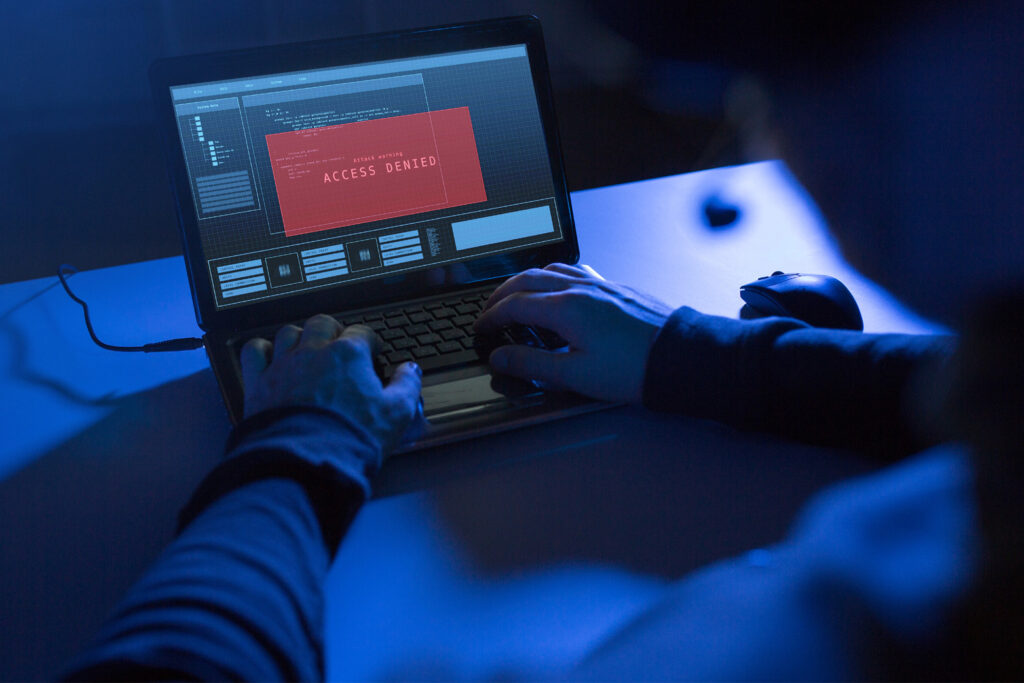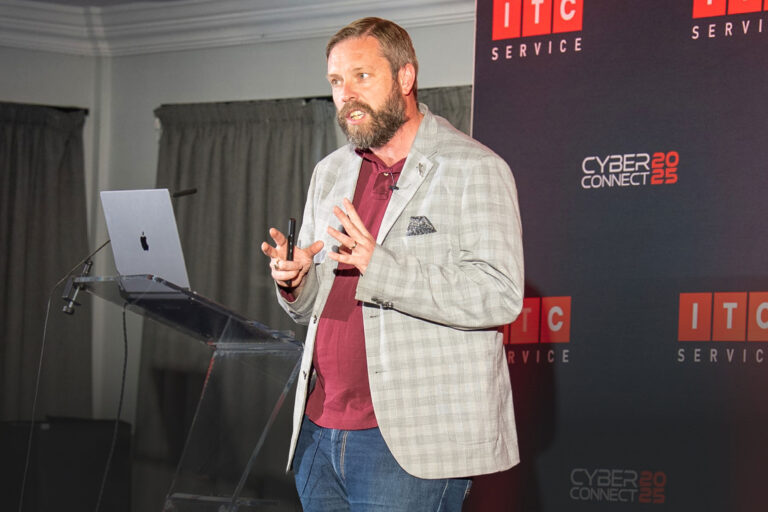Understanding the true cost of a security breach across an entire business ecosystem.
When a cyber attack makes the headlines, the focus usually falls on the business that’s been breached – the “main victim.” Systems go down, data is stolen, and recovery begins.
But behind that single story sits a much larger truth: no cyber incident happens in isolation.
In an interconnected economy, a single breach can ripple through suppliers, vendors, partners, customers, and entire communities. One compromise can quietly create hundreds, sometimes thousands of victims.
The Ripple Effect of Modern Cyber Crime
Today’s businesses operate in tightly woven supply chains. Data, payments, and systems are shared across countless touchpoints, from manufacturers and logistics firms to software providers and marketing agencies. This interdependence makes collaboration easier but also means that a single point of failure can bring an entire network to its knees.
Consider this scenario:
A well-known automotive manufacturer experiences a ransomware attack. Production stops. Customer data, supplier details, and vendor credentials are exposed.
What follows is far more than just downtime:
- Over 100 UK suppliers suddenly lose their main source of income.
- Thousands of employees face reduced hours or temporary layoffs
- Parts of the transport network stall, causing delays across the country
- Independent garages and dealerships see contracts paused or cancelled.
Within days, what began as a digital compromise transforms into a national economic event. And for many small businesses in the supply chain, a few lost weeks of revenue can mean closure.
Not only do the interconnected businesses risk financial loss, but also have the real potential of falling victim to further cybercrimes, as key details about their organisation are exposed. Such as the finance contacts full name, recent transactions and even account details.
The NCSC Reports that the UK sees at least 60 “high-level” cyber attacks per month which threaten national security and / or infrastructure. A recent public example is what’s happening currently (as of October 2025) with JLR, who have said to lost approximately £50 million as a result of the shutdowns.
According to an article by techcrunch.com: “There are roughly 120,000 people in the broader supply chain whose jobs and work rely on JLR’s ongoing operations.”
Beyond Business: The Human Impact
Cyber crime rarely shows its full face. Behind every incident report are families, employees, and communities who quietly shoulder the fallout.
When payroll systems are locked or operations freeze, staff might miss paydays or lose shifts. Business owners who spent years building their company can find their reputation, and their confidence, shredded overnight.
The emotional toll can be devastating. Stress, sleeplessness, and burnout often follow. Even when systems are restored, the trust that binds a business together – between leaders, staff, partners, and customers can take years to rebuild.
A cyber breach might begin with a line of malicious code, but its reach is profoundly human.
How the Damage Spreads:
How the Damage Spreads
- The Core Business
- Financial impact: Ransom demands, legal costs, and downtime can cripple cash flow.
- Operational disruption: Manufacturing, logistics, or service delivery can halt entirely.
- Reputational damage: Clients and partners lose faith, and the brand may never fully recover.
- Suppliers and Vendors
- Secondary exposure: Shared credentials or data links can leak through compromised systems.
- Revenue loss: Delayed payments or cancelled orders hit smaller suppliers hardest.
- Supply chain breakdown: Even one disrupted node can cascade through the network.
- Customers
- Data theft: Personal details, payment information, and communications may be stolen.
- Loss of trust: A single breach can permanently alter how customers view your reliability.
- Service disruption: Customers relying on your product or platform face their own operational risks.
- Employees and Families
- Personal data leaks: HR records and payroll details are prime targets for attackers.
- Job insecurity: Downtime often means furloughs or layoffs.
- Emotional stress: The fear of losing income or being blamed weighs heavily.
- Communities and the Wider Economy
- When a major employer or supplier pauses operations, the shockwaves extend to local economies.
- The cafes that serve the workers. The couriers who deliver to the site. The charities that rely on company donations.
- Cyber crime can quietly erode the very fabric of a community.
Shared Data Means Shared Responsibility
Modern business ecosystems thrive on collaboration, but that collaboration comes with shared risk. Every time two organisations connect systems, exchange files, or grant data access, they create a potential bridge for attackers.
Cyber security and resilience is a collective responsibility that depends on transparency, trust, and proactive defence across all partners.
That’s why frameworks like Cyber Essentials and IASME Cyber Assurance exist: to set common, minimum standards for protection. When every organisation in a supply chain takes those standards seriously, the entire network becomes stronger. To learn more about Cyber Essentials, check out our webinar on understanding Cyber Essentials here.
Real Lessons from Real Breaches
In recent years, many high-profile breaches have traced back to third-party suppliers. Attackers no longer go straight for the largest target, they find the weakest link and move upward.
A small IT vendor with remote access to multiple clients’ networks can unwittingly open the door to a multinational compromise. The lesson is clear: security must be systemic, not selective.
That means:
- Regular audits of supplier and partner security practices.
- Secure credential and access management.
- Clear response plans that include your third-party relationships.
Building a Culture of Security
Technology plays a critical role, but culture is what sustains security.
When teams understand their part in defending the business, they become the strongest layer of protection. Awareness training, strong password habits, multi-factor authentication, and regular patching are everyday disciplines that prevent disaster.
At ITC Service, we help businesses embed this mindset through prevention, detection, and continuity strategies.
From Cyber Essentials certification to advanced monitoring and recovery planning, we focus on building resilience that protects your organisation and everyone connected to it.
The Bigger Picture of Cyber Security
Cyber attacks are often treated as isolated crimes against individual companies. In reality, each one is a community event – a chain reaction that touches suppliers, families, and livelihoods.
Protecting your business isn’t just an act of self-preservation. It’s an act of stewardship, community and integrity.
Your security is everyone’s security, and your vendors and partners security is your security.
FAQs: Understanding the Ripple Effect of Cyber Attacks
Q: What is the ripple effect of a cyber attack?
A: A ripple effect happens when a cyber attack on one organisation spreads its impact to others — suppliers, vendors, customers, and even local communities. Because modern businesses are digitally connected, one breach can disrupt an entire network of partners.
Q: How can a cyber attack affect a supply chain?
A: If a supplier or manufacturer is breached, production systems may shut down, contracts can be frozen, and sensitive partner data may be exposed. In serious cases, like the Jaguar Land Rover hack in 2025, thousands of dependent businesses faced financial losses while waiting for systems to recover.
Q: Why does a cyber breach impact so many victims?
A: Most organisations share data and systems across multiple third parties. A single set of compromised credentials, or a disrupted software platform, can ripple across every partner connected to that network. That’s why third-party security is just as critical as your own.
Q: What is third-party or supply chain cyber risk?
A: Third-party cyber risk refers to the vulnerabilities that come from external partners — such as IT providers, logistics firms, or cloud services — that have access to your systems or data. Attackers often exploit these links to reach larger targets.
Q: How can businesses protect against supply chain cyber attacks?
- Vet vendors for Cyber Essentials or IASME Cyber Assurance certification.
- Limit and monitor third-party access to data and systems.
- Maintain up-to-date contracts outlining security responsibilities.
- Use endpoint protection and regular vulnerability scanning.
- Train staff to recognise social engineering and phishing attempts.
Q: What are the long-term consequences of a cyber attack?
A: Beyond lost data or downtime, businesses can face lasting damage: reputational loss, legal action, customer attrition, and even layoffs if revenue drops. Recovery costs often exceed the initial ransom or breach expense.
Q: How does cyber crime affect employees and families?
A: When operations pause or cash flow dries up, staff may face reduced hours or job insecurity. Payroll delays and uncertainty can cause real hardship — reminding us that cyber attacks aren’t just technical incidents, but human ones.
Q: What steps should small businesses take to reduce cyber risk?
A: Start with the basics: multi-factor authentication, strong passwords, staff awareness training, and patch management. Achieving Cyber Essentials certification provides a recognised foundation of protection and demonstrates commitment to security.
Q: What should a company do immediately after a cyber attack?
- Isolate affected systems and stop further spread.
- Notify your IT provider and, if necessary, the NCSC or ICO.
- Communicate transparently with clients and suppliers.
- Begin incident response and restoration with verified backups.
- Review lessons learned and strengthen defences.
Q: How can ITC Service help businesses prevent a multi-victim cyber event?
A: ITC Service provides end-to-end cyber protection — from prevention and detection to recovery and resilience. Our team helps businesses achieve Cyber Essentials, deploy advanced threat monitoring, and build continuity plans that protect everyone in their ecosystem.







